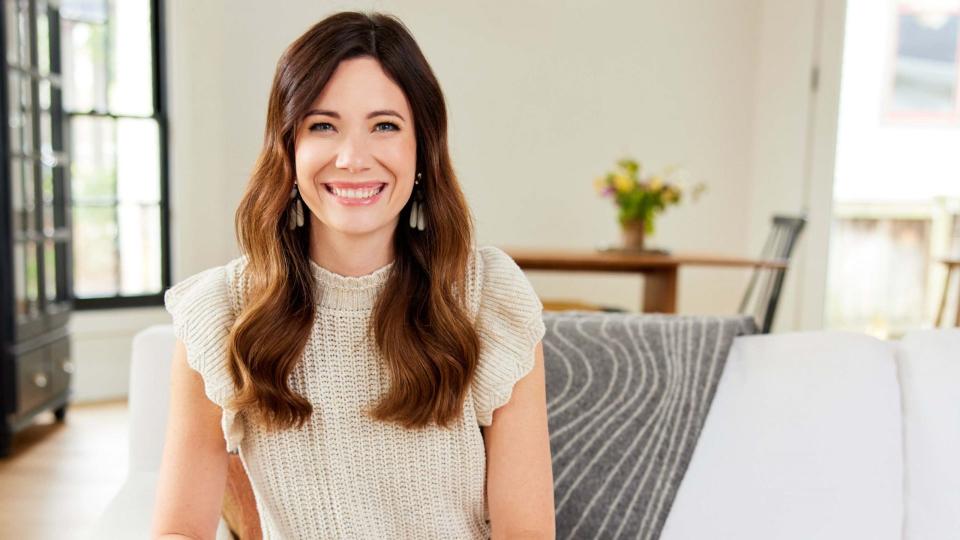Rachel Cruze: Why You Should Use ‘Buckets’ for Savings Goals

Ramsey personality and podcast host Rachel Cruze is known for giving practical advice when it comes to budgeting and saving. She shares the tips and tricks she uses in her own life to showcase ways to build a more secure financial future. From getting out of debt to setting up an emergency fund, Cruze is an advocate of following The 7 Baby Steps established by her father, famed money expert Dave Ramsey.
Find Out: 6 Things the Middle Class Should Sell To Build Their Savings
Learn More: 6 Unusual Ways To Make Extra Money (That Actually Work)
The 7 Baby Steps begin with saving $1,000 for a starter emergency fund and end with building wealth and giving. As followers move through the steps, they are given methods for paying down debt and investing for retirement. In order to ensure long-term success, Cruze recommends expanding the starter fund to a fully-funded emergency fund, which covers three to six months of expenses.
Cruze is regularly featured on social media, speaking about how she and her husband handle their emergency fund, keeping it in a completely separate bucket from any of their other savings. Find out why the money guru says you should be using “buckets” for savings goals and how other methods of saving may not measure up.
What Is the ‘Bucket’ Method of Saving?
The “bucket” method of saving involves separating your money into distinct buckets, which can mean accounts or line items within those accounts. A recent reel by bestselling author Cruze shows her advocacy for using this method for her savings and emergency fund. Her pro tip for peace of mind involves keeping these two funds in separate buckets and never touching your emergency fund unless you have run out of other options.
Speaking to a caller, she said she has a high-yield savings account with Ally that she and her husband frequently contribute to. The money is used for issues that come up with their rentals or a trip that they want to go on.
However, she noted that within that account, they “have one line that says like savings, and one line that says emergency fund.” The emergency fund has six months’ worth of expenses in it and is always kept separate. The amount doesn’t change, and when she and her husband discuss their savings account, they do not include that amount in their total.
Be Aware: 5 Unnecessary Bills You Should Stop Paying in 2024
Why Is It Important To Have Buckets?
Cruze explained that keeping these different types of savings in separate buckets helps because “you know how much is in each account and can lock in your goals.” However, she does recommend funding the emergency fund with the equivalent of three to six months of expenses only after you have paid off your debt.
If you are following the 7 Baby Steps, this tracks since Step 2 is paying off debt using the snowball method. Only once your debt is paid off, with the exception of your mortgage, should you then tackle funding your three- to six-month emergency fund. Remember, though, you should have a starter emergency fund of $1,000 already set.
Other Budgeting Methods To Consider
If you are new to budgeting and saving, then you may get overwhelmed by the sheer amount of methods that can be used to get your finances under control. Self-proclaimed money gurus from across the globe offer a number of different ways to pay off debt and build wealth. A popular method is the 50/30/20 rule, which suggests putting 50% of your income toward your needs, 30% toward your wants and 20% toward savings.
Cruze, however, said there is one tried and true method she recommends: the zero-based budget. Unlike many other budgeting techniques, with a zero-based budget, all of your money is accounted for. When you subtract your expenses from your income, it should equal zero. If you have done it correctly, all your money is allocated into the appropriate bucket, whether it is for savings, your emergency fund, entertainment or necessities. The most important thing is to find a method that works for you and your lifestyle and stick to it.
More From GOBankingRates
9 Things You Must Buy at Big Lots While on a Retirement Budget
I'm a Mechanic: These 4 Cars Have Engines That Could Die on You
This article originally appeared on GOBankingRates.com: Rachel Cruze: Why You Should Use ‘Buckets’ for Savings Goals

 Yahoo Finance
Yahoo Finance 